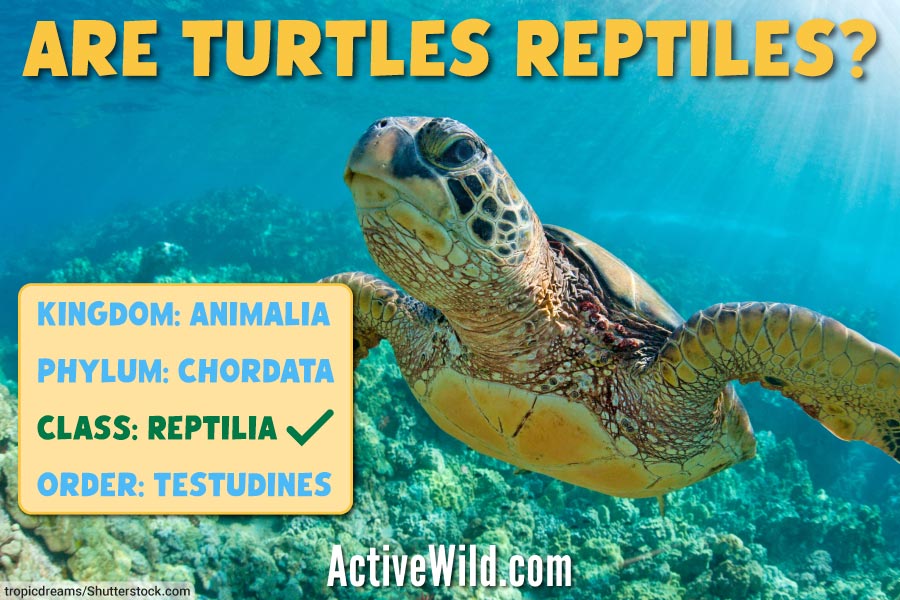Are Turtles Reptiles?
Turtles are reptiles. Turtles belong to the order Testudines, which is one of four groups of living reptiles. Turtles possess the typical characteristics of reptiles, being cold-blooded, egg-laying, scaly-skinned, vertebrate animals that breathe air with lungs.
Turtles are not amphibians; reptiles and amphibians are two different groups of animals.
Although there are some similarities between reptiles and amphibians (see the chart further down the page for a comparison of reptiles and amphibians), millions of years of evolution separates the two groups.
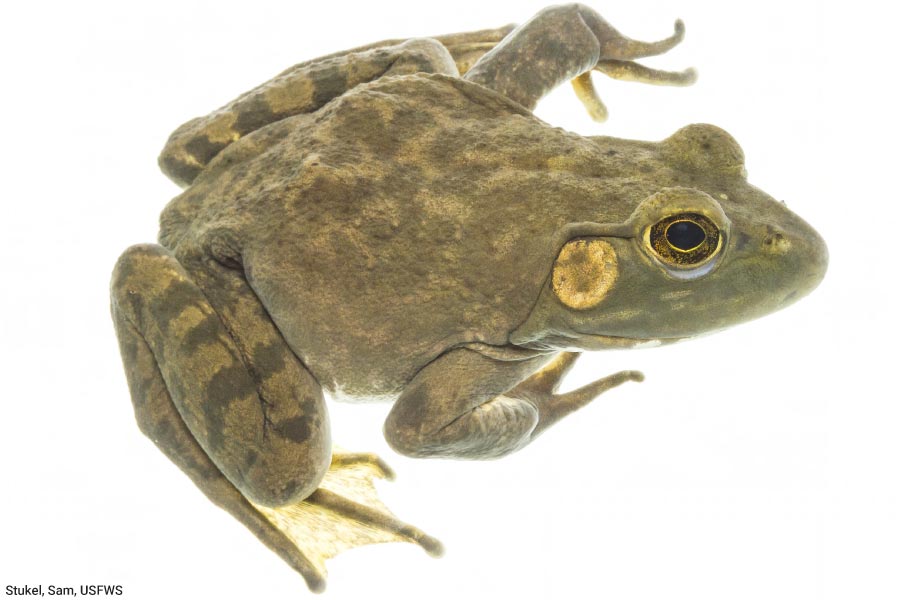
One of the main differences between reptiles and amphibians (animals such as frogs, toads, salamanders and newts) is that amphibians typically begin life as aquatic animals, breathing air with gills, before undergoing a process known as metamorphosis, in which they develop lungs and leave the water to spend their adulthood on land.
Unlike amphibians, reptiles do not undergo metamorphosis.
Why The Confusion?
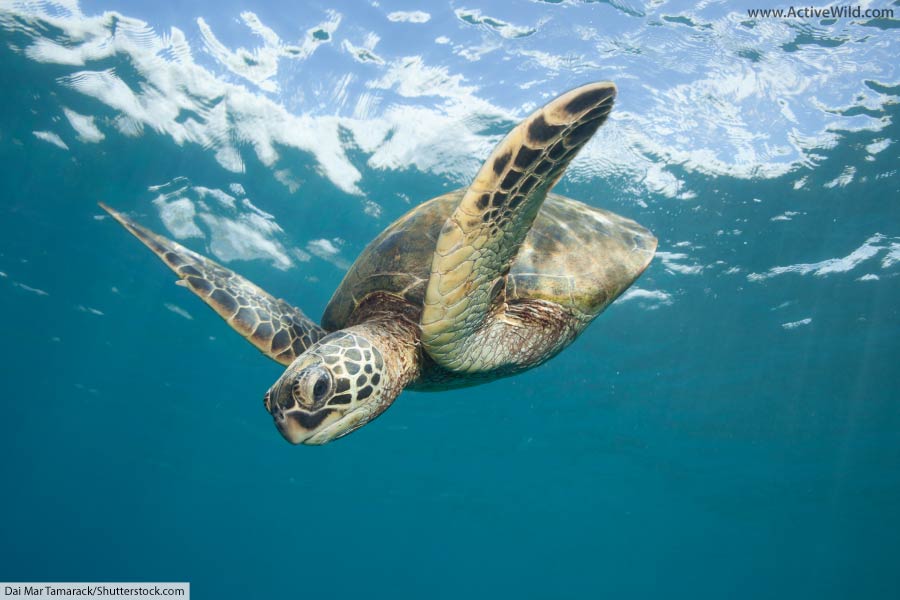
The confusion over whether turtles are reptiles or amphibians arises because the word “amphibious” can be used to describe something that functions both on land and in the water (e.g. an amphibious vehicle).
This doesn’t mean that turtles – or other semi-aquatic reptiles such as alligators – are amphibians; Reptilia (reptiles) and Amphibia (amphibians) are two, completely separate animal groups.
Page Index
- Is A Turtle A Reptile?
- What Is A Reptile?
- What Is A Turtle?
- Reptile Characteristics
- Turtle Characteristics
- Types Of Turtles
- Types Of Reptiles
- The First Reptiles
- Discover More About Reptiles With Active Wild
Is A Turtle A Reptile?
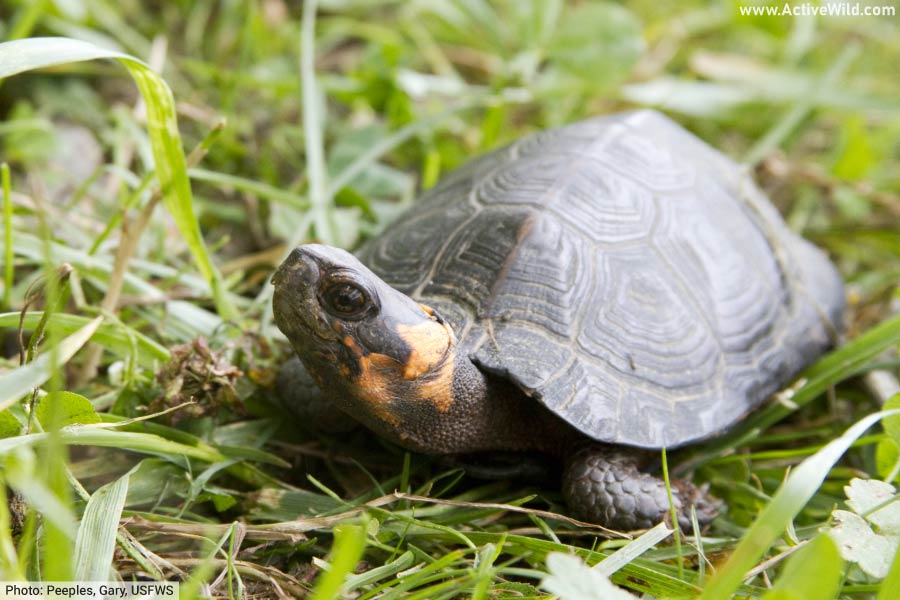
Turtles are classified as reptiles because they share key characteristics typical of this group. Like other reptiles, turtles have a body covered in scales or scutes, they lay shelled eggs, and they breathe air using lungs for their entire lives.
Additionally, turtles are ectothermic (cold-blooded), meaning they depend on the environment to regulate their body temperature.
Turtles are reptiles belonging to the order Testudines, which is one of four groups of living reptiles – you can meet the others further down the page.
Why Aren’t Turtles Amphibians?
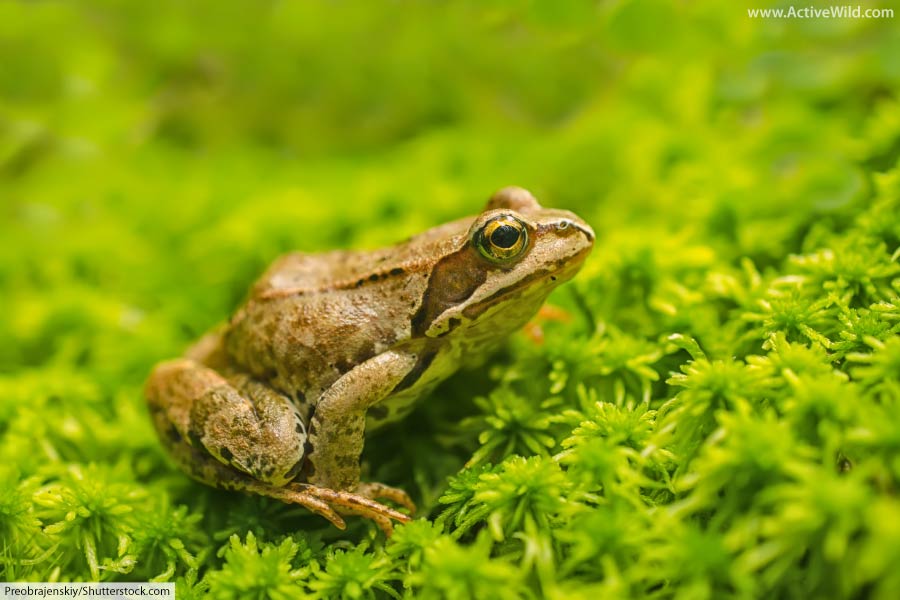
Turtles (and other reptiles) are not amphibians because reptiles and amphibians make up different branches of the animal family tree. While there are some similarities between the two groups, reptiles lack the defining characteristics of amphibians (and vice versa).
Amphibians (animals like frogs, toads, salamanders, newts, caecilians, etc.) have unique life cycles that typically involve a transition from an aquatic larval stage to a more terrestrial adult stage, a process known as metamorphosis.
During their aquatic stage, many amphibians are known as tadpoles.
Additionally, amphibians have moist, water-permeable skin, which they can use for gas exchange with the environment, a feature not seen in reptiles.
The presence of lungs in adult stages varies among different types of amphibians, and some continue to use their skin and the lining of their mouth for respiration throughout their lives.
Thus, despite the fact that some turtles are semi-aquatic or aquatic and may seem similar to amphibians, they have very different biological characteristics and life histories, classifying them as reptiles.
Comparison Of Reptile and Amphibian Characteristics
| Characteristic | Reptile | Amphibian |
| Vertebrate | y | y |
| Ectothermic (cold-blooded) | y | y |
| Eggs with shells | y | n |
| Scaly skin | y | n |
| Water-permeable skin | n | y |
| Breathe with lungs for entire life | y | n |
| Undergo metamorphosis | n | y |

The answer to the question “is a turtle a reptile?” is “yes”, but in order to fully understand why turtles are reptiles – and the differences between turtles and other reptiles – we need to explore the reptile family tree…
What Is A Reptile?
A reptile is an animal in the class Reptilia.
What is a “class”? In order to make sense of the animal kingdom, zoologists place individual animals into groups of related species (a process known as "classification"). A class is one such group.
The class Reptilia contains all reptiles, both living and extinct, including turtles, snakes, lizards, crocodiles, dinosaurs and pterosaurs, etc.

Examples of other animal classes include Mammalia (mammals); Amphibia (amphibians); Insecta (insects) and Arachnida (spiders, scorpions, etc.)
All reptiles (including turtles) share a common ancestor, which lived around 312 million years ago.
In other words, if you go far enough back into the family tree of any reptile – turtle, crocodile, dinosaur, whatever – you’ll end up at the same animal (which you’ll meet further down the page).
- You can find out more about animal classification on this page: Animal Classification
What Is A Turtle?
A turtle is a reptile of order Testudines. Testudines is a group of related animals within the wider Reptilia class.
Not all turtles have the word “turtle” in their names; animals such as tortoises and terrapins belong to the order Testudines, and all are therefore considered to be turtles.
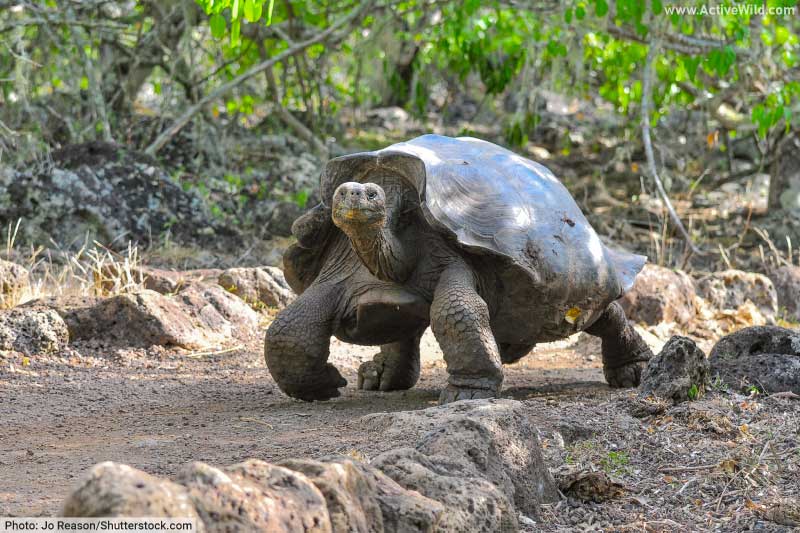
Types Of Turtles
- Tortoises are terrestrial (land-living) turtles in the family Testudinidae.
- Terrapins are small freshwater turtles. The name “terrapin” has been given to a number of (often unrelated) turtle species, including Indian pond terrapins and red-eared sliders.
- Sea Turtles are large turtles that live in the ocean. Some sea turtles migrate thousands of miles between their feeding and breeding grounds. There are 7 sea turtle species.
You can see examples of each type of turtle on this page: Types Of Turtles
You can find out more about sea turtles on this page: Sea Turtle Facts.
The Four Main Types Of Reptiles

- Order Testudines (turtles) – 363 species
- Order Crocodilia (crocodiles, alligators, caimans and gharials) – 27 species
- Order Squamata (snakes, lizards and amphisbaenians) – 11,549 species
- Order Rhynchocephalia (the tuatara) – 1 species
(Species data from the Reptiles Database)
Testudines is one of four orders of living reptiles, the others being Crocodilia (crocodiles and related species), Squamata (snakes and lizards) and Rhynchocephalia (the tuatara).
- The order Rhynchocephalia contains just one species: the tuatara. You can find out more about it on this page: Tuatara Facts
What is an “order”? We’ve already found that a class is a group of related animals. An order is a sub-division of a class that contains animals that are more closely related to one another than they are to other animals in the class.
An order can itself be sub-divided into smaller groups, known as families. Animal families contain one or more related species.
The order Testudines (turtles) contains 14 families and 361 species. (Source)
The largest turtle family is Geoemydidae, which contains 71 species, including the European pond turtles. Another turtle family is Cheloniidae, which contains six of the seven species of sea turtle, including the hawksbill sea turtle, green sea turtle and flatback sea turtle.
You can find out more about the different types of turtle further down the page.
Reptile Characteristics
- You can find out more about reptile characteristics on this page: Reptiles: The Ultimate Guide
A turtle is considered to be a reptile because it shares a common ancestor with all other reptiles and therefore has inherited characteristics that are shared by all reptiles (or at least has these characteristics somewhere in its ancestry).
Scientists are unsure exactly how to group turtles in relation to other reptiles: some believe that turtles are closer to crocodilians, while others believe that reptiles are closer to snakes and lizards.
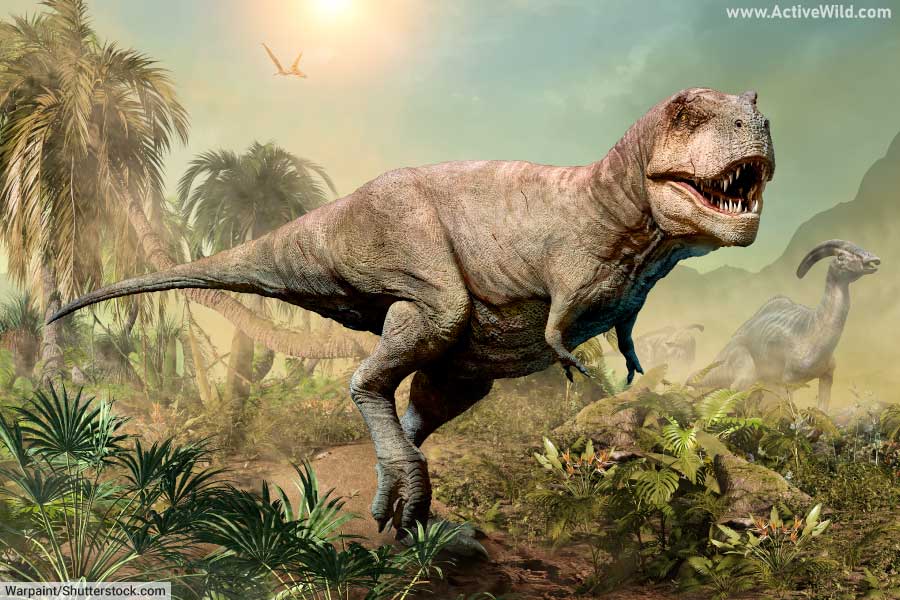
Although two different reptiles (e.g., a turtle and a snake) might look very different from each other, both will have certain characteristics in common.
It is these characteristics that identify both turtle and snake – and any other reptile – as being reptiles, rather than mammals, amphibians, or any other type of animal. Although other animals may share one or more of these characteristics, only reptiles have them all. Some reptilian characteristics are listed below:
- All reptiles are vertebrates (i.e., they have backbones)
- All reptiles breathe air with lungs.
Although many turtles live in water, all have to come up to the surface to breathe at regular intervals.
- Reptiles are amniotes.
An amniote is an animal whose eggs have a special protective membrane called an amnion. The eggs of amniotes, unlike those of fish or amphibians, do not have to be laid in water.
Mammals are also amniotes, but the ancestors of mammals branched off from the ancestors of reptiles hundreds of millions of years ago.
All turtles lay their eggs out of the water. Even sea turtles that spend most of their lives at sea haul themselves onto the beach in order to lay their eggs.
- Reptiles have scales or scutes.
Reptiles such as snakes and lizard have overlapping scales, whereas the scales of a turtle do not overlap and are correctly known as scutes.
Scutes are scales with a hard layer of keratin (the naturally-occurring substance out of which our fingernails are also made).
- Reptiles are generally ectothermic (cold-blooded)
Being cold-blooded means that an animal lacks the physical means to keep its body at a constant temperature.
The body temperature of a cold-blooded animal such as a turtle therefore changes according to its surroundings.
In order to raise its body temperature, a turtle has to move to a warmer area, for example by crawling onto a river bank to bask in the sun or by swimming to a warmer area of water.
By contrast, the body of an endothermic (warm-blooded) animal such as a mammal keeps itself within a specific temperature range.
(The downside of being warm-blooded is that keeping the body at constant temperature usually requires a lot of energy. As a result, warm-blooded animals have to spend more time finding food.)
Warm-Blooded Reptiles?
A very small number of living reptiles (including the leatherback sea turtle Dermochelys coriacea and the Argentine black and white tegu Salvator merianae) are endothermic (warm-blooded) to a certain extent.
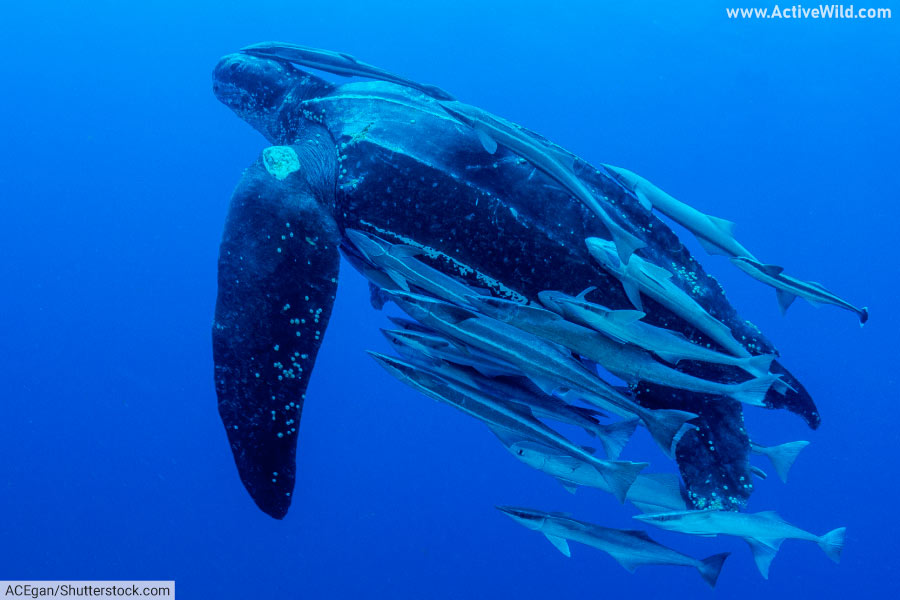
Turtle Characteristics
Shell
The characteristics listed above separate reptiles from other types of animals, but what distinguishes turtles from other reptiles?
The main characteristic of turtles is the shell, which is unique to turtles and not found in any other vertebrates.
A turtle’s shell consists of a carapace, which protects the back and upper parts of a turtle, and a plastron, which covers the turtle’s chest and undersides.
The shell is made of bone and is fused to the turtle’s backbones and ribs. Covering the surface of the shell are hardened scutes (hard scales) that are fused together.
Lack Of Temporal Fenestrae
The skulls of turtles lack temporal fenestrae – holes that are present behind the eye sockets of skulls of other amniotes (reptiles, mammals and birds).
The lack of temporal fenestrae was once used as proof that turtles were descended from very primitive reptiles, whose skulls also lacked these openings.
Zoologists now believe that turtles are descended from reptiles whose skulls did have the openings, but that turtles subsequently lost the openings as they evolved.
Lifestyle & Diet
Most turtles are omnivores, with the plant / meat ratio of their diet varying from species to species. Tortoises (which usually live on land) tend to be herbivorous, while aquatic turtles are more carnivorous. Species that are predators tend to have powerful jaws for capturing their prey.
Turtles do not have teeth. Instead, their jaws have hard keratin surfaces that are used to cut and chew food.
Types Of Turtles

There are 363 turtle species (source) divided between 14 families (source).
There are two main types of turtles: side-necked turtles and hidden neck turtles.
Side-necked turtles, whose necks fold sideways into the shell, belong to the suborder Pleurodira; hidden-necked turtles, whose necks retract straight back into the shell, belong to the suborder Cryptodira.
Pleurodira (Side-Necked Turtles)
The suborder Pleurodira (side-necked turtles) contains 3 families and 99 species
An example of a side-necked turtle is the yellow-spotted Amazon river turtle Podocnemis unifilis. This species is found in river systems in South America, including the Amazon and Orinoco basins. It grows to around 18 in. / 45 cm in length and can be identified by the yellow spots on its head.
Cryptodira (Hidden Necked Turtles)
The suborder Cryptodira (hidden necked turtles) contains 11 families and 262 species
An example of a hidden-neck turtle is the common snapping turtle Chelydra serpentina. This species is found in freshwater habitats in the United States and Canada. It grows up to 20 in. / 50 cm in length and is known for its powerful bite and aggressive temperament!
You can see many different turtles on this page: Types Of Turtles: Pictures & Fun Facts
The First Reptiles
As we’ve found, all living reptiles (including turtles) share a common ancestor.
Before reptiles appeared, vertebrate animals such as fish and amphibians were confined to aquatic environments. (Even amphibians, most of which are able to leave the water once mature, have to lay their eggs in water.)
The early ancestors of reptiles evolved eggs that have a protective membrane called an amnion, which allowed their eggs to be laid away from water. Animals whose eggs have an amnion are known as amniotes.
The first amniotes were small lizard-like animals.
Because amniotes were no longer restricted to aquatic environments, they were able to thrive in a wide range of terrestrial (land) habitats.
The amniotes split into two main groups: sauropsids and synapsids.
The sauropsids were the ancestors of reptiles (and birds); the synapsids were the ancestors of mammals.
The very first true reptiles appeared around 312 million years ago, during the Carboniferous Period. They included animals such as Hylonomus, a 9.84 in / 25 cm long lizard-like animal that lived in what is now Canada.
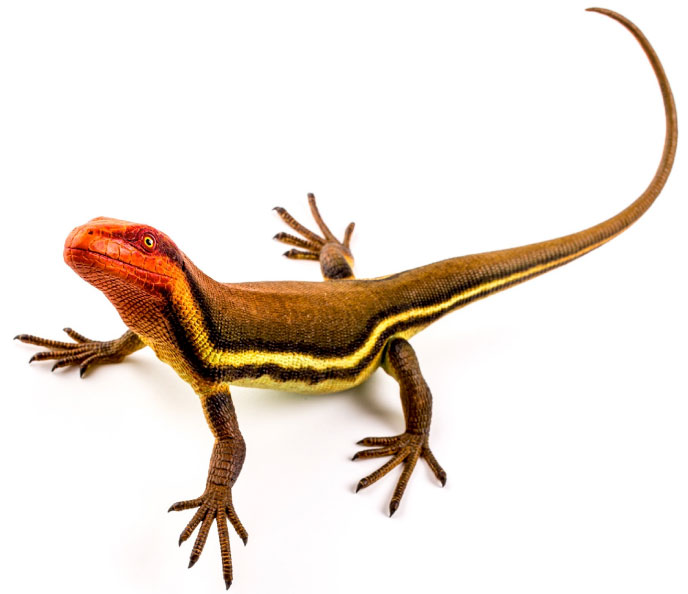
An animal similar to Hylonomus is the ancestor of all reptiles, including all 360-odd species of turtle.
It is this common ancestor, from which all reptiles are descended, that makes turtles reptiles.
Discover More About Reptiles With Active Wild
- Types Of Turtles: Pictures & Interesting Facts
- Reptiles: The Ultimate Guide – Pictures & Facts, What Makes a Reptile a Reptile, Types of Reptile – A Complete Guide To Reptilia With FREE Question Sheet
- List Of Reptiles With Pictures & Facts: Examples Of Reptile Species
- Reptile Books: A Selection Of Awesome Books on Snakes, Crocodilians, Turtles & Lizards. Encyclopedias, ID Guides & More…
- Tuatara Facts, Pictures & Information. Meet the only living member of a once-widespread group of reptiles!
- Are Alligators Dinosaurs? How Crocodilians Are Related To Dinosaurs

